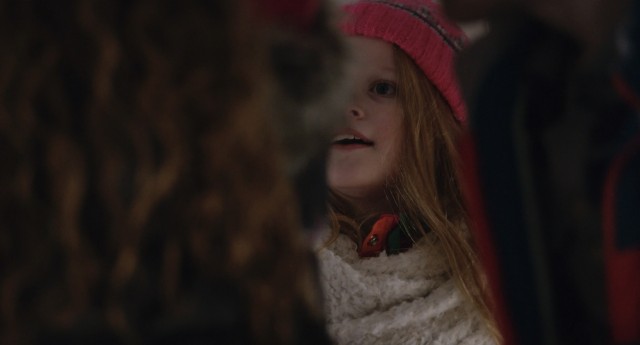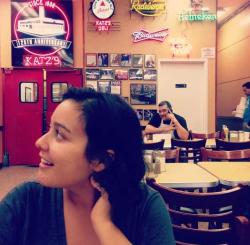In What I See When I Look, writer/director Lindsay Calleran invites us to follow two sisters over the course of one Winter day. While at first sight their life seems pretty mundane, at home with their parents and at school, it is not the actual facts that Calleran brings to the screen but the emotional undertones of what is left unsaid and how the complicated family dynamic is perceived through the eyes of the younger sister, Ashley.
“Cinema has the capacity to act and function so similarly to memory”
With Calleran confessing that the film was inspired by their “own memories from childhood”, throughout the 13-minute run-time of What I See When I Look, the film does begin to feel like some sort of recollection, as every scene is shown through a specific perspective, allowing us to have only one point of view. Adding that they wrote the film at a time they were questioning “the validity” of their own narratives, Calleran was inspired to pen a screenplay with a very sensorial approach to the moments it depicts. “I wanted to materialize those feelings cinematically, because cinema has the capacity to act and function so similarly to memory”, they explain,
Set in a confusing time in Ashley’s life, as we follow her day we begin to understand that she is trying to understand her surroundings, but can’t quite figure it all out yet – this perspective presented to us through the narrative and the production. As a viewer, we are quicker putting it together, factually, but again the film is more about the young girl’s own emotional experience. So through the cinematography, and how Calleran and DP Jack Davis built the frames, we can see how she perceives her family’s behaviour and how that will shape her as she grows-up.

Calleran decided to use “long lenses with a roaming and slightly subjective camera, and a docustyle approach for much of the school scenes” when shooting What I See When I Look.
When it comes to memories, the images are often blurry in our minds but it’s the specific details that we remember perfectly. The sound design in the film is quite impressive in this regard, as it works with the visuals to recreate this sense of remembrance, especially when something is happening in another room and we don’t get to see it, then the audio takes over and allows us a good grasp of the situation. In general, the work of Sound Designer Noah Chevan is vital in immersing us in Ashley’s perspective, with the soundscape helping to deepen our emotional engagement with her.
Describing What I See When I Look as “a film about subjectivity and formative memory”, Calleran ensures that as we witness Ashley piecing together the elements around her, neither the screenplay nor the direction ever try to be moralistic, despite the complicated situation she is in. In fact, the most emotionally poignant moments in the short are when feelings are communicated without any words ever being spoken, with the main actors – the two girls, Ashley Pearsall & Meaghan Sullivan, and their mom, Emilea Wilson – all impressive in this respect. Their on-screen chemistry is incredibly authentic and heavily charged, echoing the underlying tensions within the family and helping us to understand that this seemingly slice-of-life moment might actually turn into a defining one in young Ashley’s life.
Ahead of its online premiere today, What I See When I Look made its way around the festival circuit with notable selections at the Palm Springs ShortFest and Oak Cliff, and was awarded Best Short Film at Sun Valley. Calleran is currently developing their first feature Caity, that has already gained support from various organizations including Sundance Catalyst, the OUTFEST Screenwriting Lab and The Gotham Project Market, to name a few. Calleran shared with us that it will explore “similar themes to What I See When I Look, predominantly addiction, family and coming-of-age.”

 Céline Roustan
Céline Roustan